Your Ultimate Guide on How to Start a Balcony Garden
Are you itching to dive into the wonderful world of gardening but find yourself short on space? Fear not, because today, we’re embarking on a journey to transform your humble balcony into a lush oasis with this guide on how to start a balcony garden!
Picture this: stepping out onto your balcony and picking the fresh fruits and vegetables you need to make a meal. Sounds like a dream, right? Well, with a little bit of know-how and a whole lot of love, you can turn this vision into a reality.
Related: How to Start an Indoor Garden and Grow Any Time of Year
In this post, we’ll be delving into the nitty-gritty of balcony gardening, covering everything from selecting the perfect plants to maximizing your limited space and ensuring your plants thrive in their urban environment. Whether you have a sprawling balcony or just a tiny nook to work with, we’ve got you covered.
So, grab your gardening tools and let’s get started on this adventure together! Get ready to breathe new life into your outdoor space and discover the joys of balcony gardening.
1. Assess Your Space
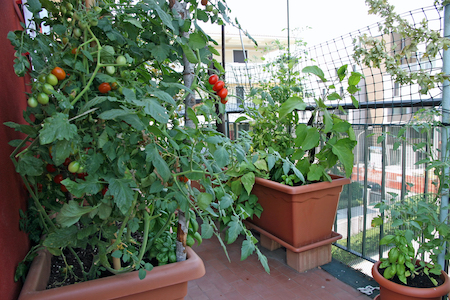

If you live in an apartment or condo, the very first thing you have to do is find out if your building allows balcony gardens. Some buildings don’t allow any plants at all, while others will only allow flowers. Be sure to check out the rules for your building before you get started.
Next, consider how much weight your balcony can handle. Ceramic and terra cotta pots are very heavy. If you’re concerned about weight, consider fabric grow bags, which are much lighter. You can also combine this with lightweight soil mixes.
Lastly, take a good look at your balcony. How much sunlight does it receive throughout the day? Is it windy? Understanding your balcony’s unique conditions will help you choose the right plants that thrive in your environment.
2. Select the Best Plants to Grow on a Balcony
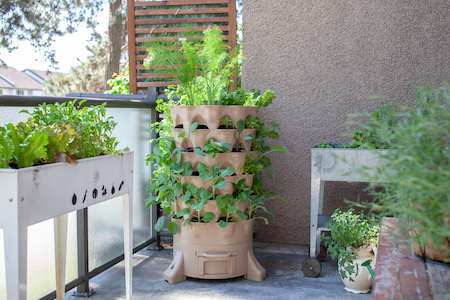

One of the most exciting aspects of starting a balcony garden is selecting the perfect plants for your outdoor space. With a wide variety of options available, it’s essential to choose plants that not only suit your personal taste but also thrive in the unique conditions of a balcony environment.
Related: 15 Forgiving Vegetable Plants Perfect for Beginner Gardeners
Before diving into plant selection, take some time to assess your balcony’s specific conditions. Factors such as sunlight exposure, wind exposure, and temperature fluctuations will play a crucial role in determining which plants will thrive in your space.
- Sunlight: Does your balcony receive full sun, partial sun, or shade throughout the day? Different plants have varying sunlight requirements, so it’s important to match your plant choices with your balcony’s sun exposure. To accurately figure out how many hours of direct sun your balcony gets, you’ll either have to time it with a watch or use a tool called a sun calculator. Make sure you do this close to your growing season since the amount of sun you get changes from season to season.
- Wind: Is your balcony windy, or is it sheltered from the breeze? Wind can dry out soil and damage delicate plants, so consider selecting wind-resistant varieties if your balcony is particularly exposed.
- Temperature: Balconies can experience temperature fluctuations, especially in urban environments. Choose plants that can tolerate these fluctuations and thrive in your local climate.
Choose Your Plants Wisely
When it comes to selecting plants for your balcony garden, prioritize varieties that are well-suited to container gardening and don’t require a lot of space to thrive. Here are some popular choices to consider:
- Herbs: Culinary herbs such as basil, mint, rosemary, thyme, and parsley are excellent choices for balcony gardens. They’re compact, versatile, and can be used fresh to elevate your culinary creations.
- Vegetables: While some vegetables may require more space than others, many are well-suited to container gardening. Consider growing compact varieties of tomatoes, peppers, lettuce, spinach, radishes, and green onions to enjoy a bountiful harvest right outside your door.
- Flowers: Add a splash of color and beauty to your balcony with flowering plants like petunias, pansies, marigolds, geraniums, and impatiens. Choose varieties that bloom continuously throughout the growing season to keep your balcony vibrant and lively.
- Succulents and Cacti: If your balcony receives a lot of sunlight and tends to be on the drier side, succulents and cacti are excellent choices. These low-maintenance plants come in a variety of shapes, sizes, and colors, adding visual interest to your balcony garden.
3. Consider Dwarf Trees
If you have a larger balcony or more ambitious gardening goals, don’t forget about dwarf fruit trees. A lot of people mistakenly believe they can’t grow fruit trees because they don’t have a huge yard, but there are a lot of outstanding varieties of dwarf fruit trees that are perfectly suited for small yards and balconies!
In addition to dwarf fruit trees, there are several types of berry bushes you can grow in containers, including blueberries, strawberries, raspberries, and blackberries.
Plus, some of these awesome fruit trees you can grow indoors are also great options for balconies. Not only do they have a compact size, but you can also move them in and out as the seasons change to keep them happy and thriving.
4. Take Advantage of Vertical Space
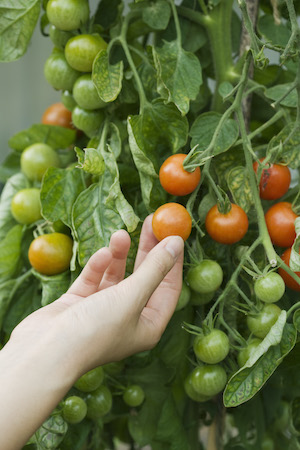

The next step in how to start a balcony garden is one that a lot of people overlook: thinking vertically! Taking advantage of vertical space opens up a world of possibilities and allows you to make the most of your limited outdoor space. Here are several great ways you can take advantage of every inch of space in your balcony garden:
Hanging Planters and Vertical Gardens
Hanging planters are a fantastic way to add greenery to your balcony without taking up valuable floor space. You can hang them from railings, hooks, or ceiling mounts.
Vertical gardens, sometimes also called living walls or green walls, are another innovative solution for maximizing vertical space. These structures feature pockets or panels where your plants will grow.
Trellises
Trellises are essential tools for vertical gardening, providing support for climbing plants such as vines, peas, beans, and cucumbers. Install trellises along balcony railings or walls to create vertical growing space and let climbing plants reach for the sky while freeing up floor space below for other containers.
Tiered Plant Stands and Shelving Units
Tiered plant stands and shelving units are perfect for displaying a variety of plants in a compact space. Choose freestanding units or wall-mounted shelves to create vertical displays of potted herbs, flowers, succulents, and small vegetables.
Arrange plants according to their sunlight requirements, with sun-loving varieties placed on higher shelves and shade-tolerant plants on lower levels. Look for plant stands and shelving units made from weather-resistant materials like metal or wood to ensure they can withstand outdoor conditions.
5. Get a Good Watering Can
When you have a traditional in-ground or raised bed garden, you can often rely on Mother Nature to water your plants. When you don’t get enough rain, you likely have a garden hose nearby that can help you take care of the job.
On the other hand, when you start a balcony garden, your plants might not get any rain if they’re covered by another balcony. It’s also likely that you won’t have easy access to a garden hose. Therefore, you’ll have to come up with another way to get water to your plants.
Self-watering pots are one option to consider. You can also invest in a large watering can that’s easy to fill in a sink or bathtub.
When you water your plants, will excess water drip down on your neighbors below? If so, make sure you’re courteous and put some saucers or trays under your containers to collect the overflow.
6. Keep Things Neat and Tidy
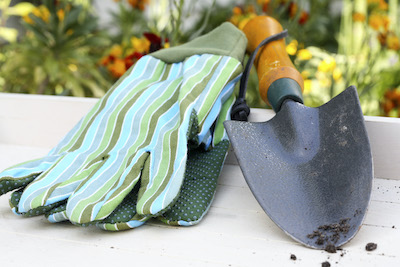

Let’s face it, gardening can be a bit of a dirty hobby. While there’s nothing like the smell of fresh soil, you might not want all that dirt all over your balcony floor. Plus, a well-kept balcony garden not only enhances the beauty of your outdoor space but also creates a welcoming environment where you can relax.
Regular Cleaning
Placing down some small outdoor rugs is a great way to help contain dirt and plant debris. If you don’t have any downstairs neighbors, you can simply shake the rugs out to clean them. However, if you do have people below, use a small vacuum or broom and dustpan to clean your rugs.
Also, don’t forget to regularly empty standing water in the saucers and trays under your plants to prevent attracting pests and limit mold and mildew growth.
Storage Solutions
Effective storage solutions can help you keep gardening tools, supplies, and accessories organized and easily accessible.
Consider investing in weather-resistant storage boxes or cabinets to store gardening tools, pots, and fertilizers. Choose containers with tight-fitting lids to protect your belongings from the elements.
Just like you can utilize vertical space on walls or railings for your garden, you can also use it for storage. Hang hooks, shelves, or organizers for storing small tools, gloves, watering cans, and other essentials. Vertical storage solutions help maximize space and keep items within reach.
You can also opt for multipurpose furniture pieces such as benches or tables with built-in storage compartments. These versatile pieces provide seating or workspace while offering hidden storage for gardening supplies.
7. Set Aside Time for Maintenance
Just like any garden, your balcony garden will need regular attention and care. Make sure you set aside some time every few days to check on your plants and take care of regular maintenance tasks, including fertilizing, deadheading, and pruning.
Also remember, the more often you pick fruits and vegetables off your plants, the more it encourages the plants to keep producing. Make sure you stay on top of harvesting so you can get as much fresh food from your plants as possible.
Although you likely won’t have to deal with as many pests in your balcony garden as you would in an in-ground garden, they can still show up and pose a threat to the health and cleanliness of your garden. Here are some preventive measures you can use to keep pests at bay:
- Inspect Regularly: Keep an eye out for signs of pests such as chewed leaves, holes, or webs. Inspect plants regularly and take action at the first sign of infestation.
- Natural Remedies: Use natural pest control methods such as insecticidal soap, neem oil, or diatomaceous earth to deter pests without harming beneficial insects or plants.
- Companion Planting: Plant pest-repellent herbs and flowers such as marigolds, lavender, basil, and chives alongside susceptible plants to deter pests naturally.
How to Start a Balcony Garden in an Urban Area
Starting a balcony garden isn’t just a rewarding endeavor; it’s also a delightful journey into the world of greenery and serenity. By following the steps outlined in this guide on how to start a balcony garden, you can transform your balcony into a vibrant oasis bursting with life.
From selecting the perfect plants to maximizing vertical space and maintaining cleanliness and organization, every aspect of balcony gardening offers opportunities for creativity and connection with nature. Whether you’re a seasoned gardener or a novice with a green thumb, there’s something truly magical about nurturing plants in the midst of urban living.
So, roll up your sleeves, grab your gardening tools, and embark on your gardening adventure with confidence and enthusiasm. Your balcony garden awaits, ready to become a sanctuary of beauty, relaxation, and inspiration.
More Excellent Gardening Tips to Help You Grow
Did you enjoy learning more about how to start a balcony garden? Are you interested in discovering other tips that will really help your garden thrive? Then please be sure to take a look at some of our other popular posts:
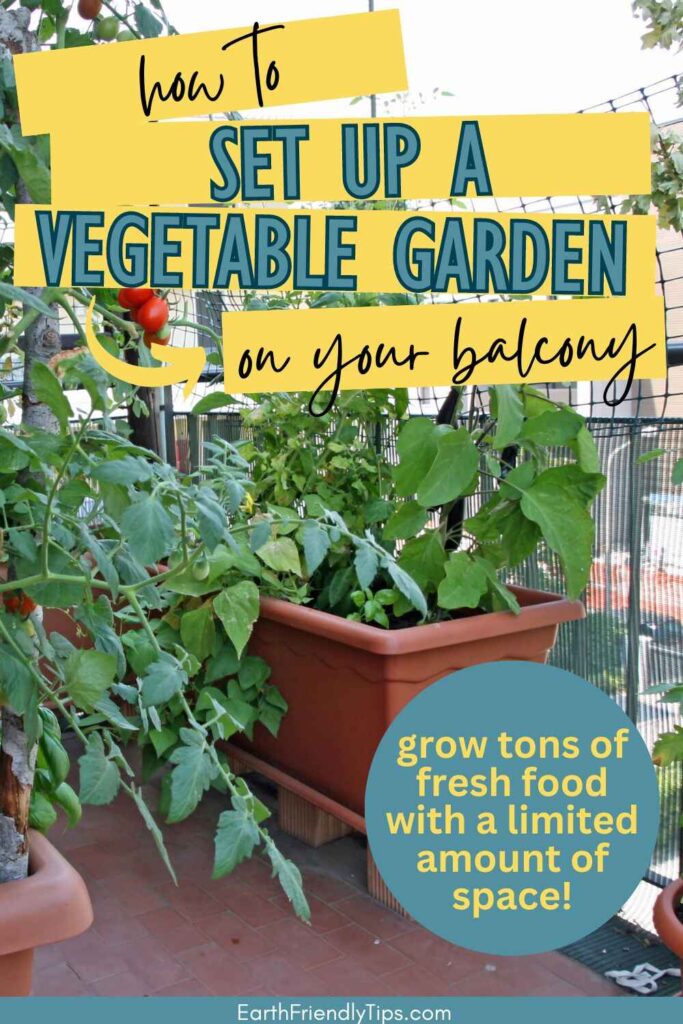

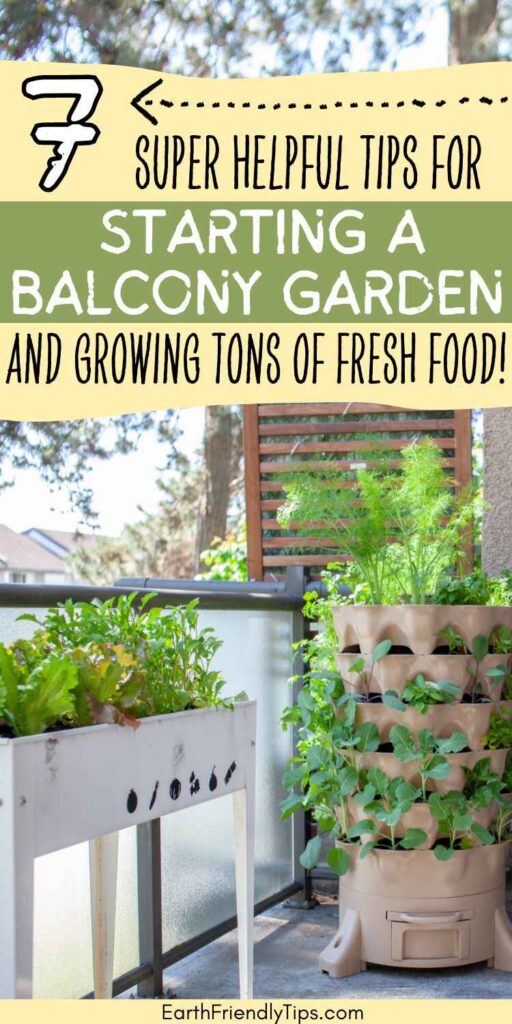

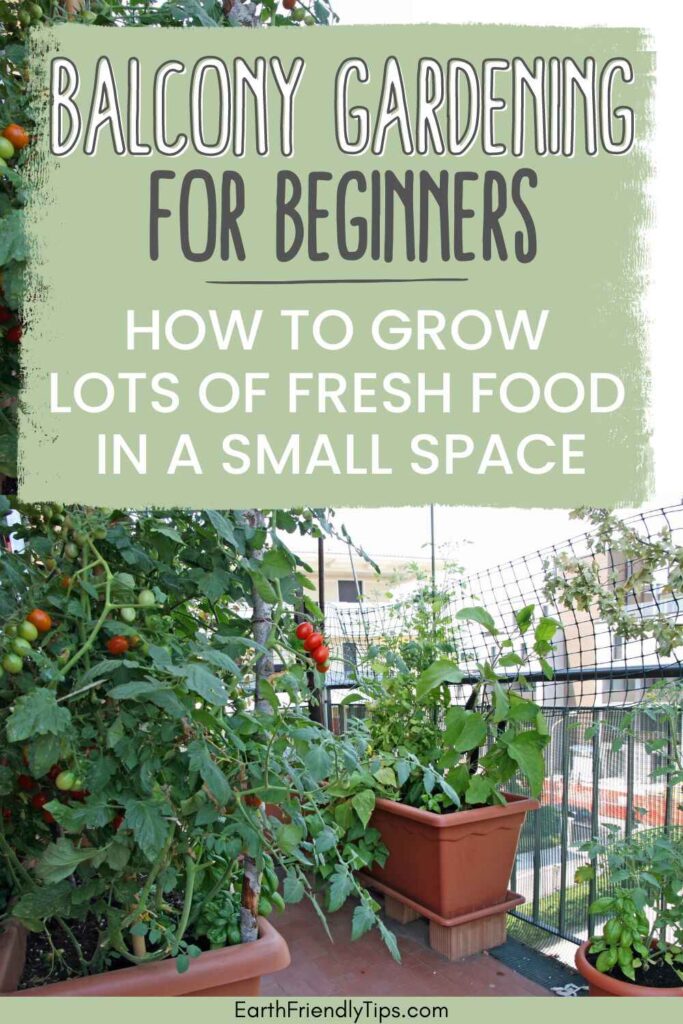

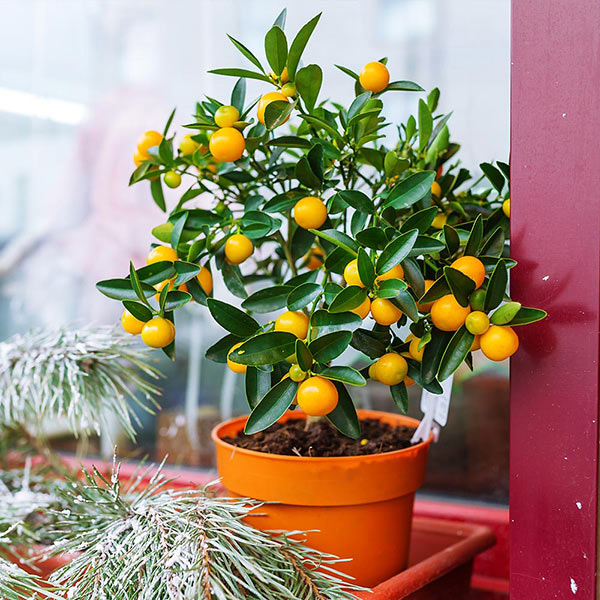
Leave a Reply